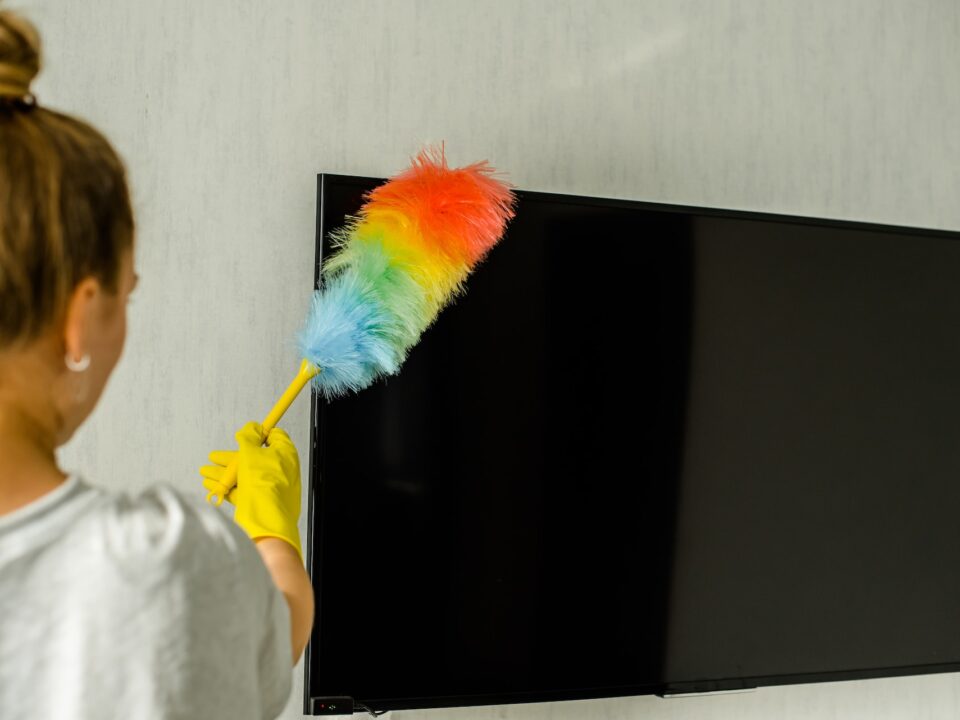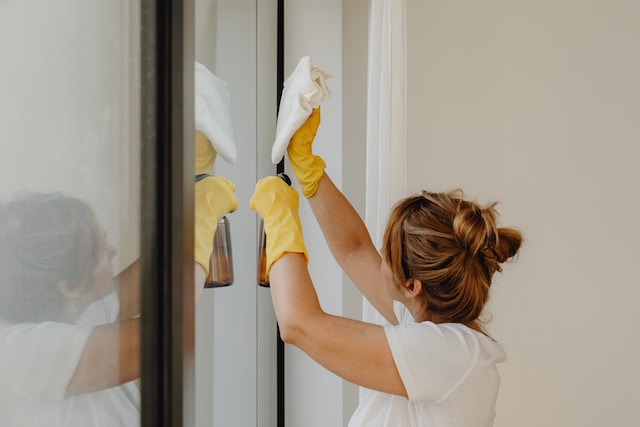Two Simple Methods to Remove Mould from Walls and Ceilings

The Smart Way to Clean a Stove Top
July 6, 2018
A Guide to Washing Bedsheets
July 24, 2018Mould is resilient, and no matter how well you clean, it probably comes back shortly afterwards. Part of the problem is that you may not be practicing prevention to keep mould away, but the other part of the problem is that you may not be cleaning it properly in the first place. You may be using a variety of cleaning chemicals to deal with it and not having much luck. These chemicals may make it go away quickly, but then contribute to mould returning later. We are going to show you two simple ways you can get rid of mould in your walls and ceilings where it tends to be most prevalent.
Scrub Brush
Tough mould needs a tough solution, and we recommend using a bristled scrubbing brush for the task. Mould that is thick and dark will need some serious scrubbing to get rid of it. You don’t want to use a metal scrubbing pad or metal brush, though, as they can damage the surface the mould is stuck to. You also don’t want to use the scrubbing brush on its own. You need to loosen up the mould to make it easier to get rid of, so you should combine your scrub brush with a powerful cleaning agent.
We suggest using a mix of bleach and water. You don’t have to use any fancy, expensive chemicals. You can simply use the same things you have lying around your home already as part of your cleaning arsenal to get rid of this pesky mould. You can either spray the bleach and water solution at the mould or soak a clean cloth in the solution and rub it onto the mould. Be sure to use a pair of gloves as you work to protect your hands, and be careful about splashing the bleach onto your clothes. You may want to use an apron to keep your clothes safe from the bleach.
Just scrub in circular pattern until you get all the mould off. You will probably only be able to remove the majority of the mould with the brush. Once you have scrubbed off all you can, wipe down the rest with the cloth and bleach solution. Finally, dry off the wall or ceiling with a fan or dry cloth. This is a very important step, as it keeps mould from coming back and infesting your home again. It is important the you keep mould away, since it can cause all sorts of health problems, including allergic reactions.
Soapy Water and a Sponge
There is another simple method we want to share with you too. Perhaps bleach is too harsh for you or you are dealing with soft mould that you could just wipe away. Don’t be tricked into thinking that you can simply wipe mould off your wall or ceiling with a dry cloth or wet wipe and be done with it. If you don’t use the right tools and the right method, then it will come back shortly.
For mould in wet areas or mould that is too soft to use a scrubbing brush on practically, you can use a soft sponge and some warm, soapy water. Don’t make the water so hot that you cannot stand it, and you only need to add a few drops of soap. You can use dishwashing liquid for the soap, and simply mix your water and soap together in a bucket to draw from for when you are cleaning.
Then you can get to work, dipping your sponge in the soapy water and scrubbing at the mould on the wall or ceiling. You can wring out the sponge slightly before you scrub to ensure that you are not leaving puddles or soaking the surface you are trying to clean. Remember that water is mould’s friend, so you don’t want to leave a mess of water when you are finished. Softer mould will come right off with a single wipe of the sponge, and the soap helps to pull the mould up and disinfect the surface.
Be sure to clean any mould-infested surfaces thoroughly. It’s a good idea to take another pass with your soapy water and sponge after your initial cleaning. Once you are sure that you got all the mould, make certain that you dry up the area you were cleaning and the surrounding area. Be sure to look for any puddles you may have made and use a dry cloth to clean them up. You can also set up a fan to rotate in that area to dry everything without as much effort from you. Just be sure that the water is dried up in an hour or two. If it I still wet after a few hours, then you need to physically dry the area yourself, as this will prevent new mould from growing too quickly. Its a good idea to use these tips for move out cleaning because at that time it becomes apparent if you have a mould problem.
Prevention
Now that you know how to clean your walls and ceiling of mould, let’s take just a moment to cover what you can do to keep mould from coming back and prevent it in the first place.
You want to keep your home dry and clean up any excess water. You should also clean your home thoroughly on a regular basis. If there are any leaks in your plumbing or fixtures, then those need to be addressed right away, as they can create pooling water that allows mould spores to grow fast.
You should also disinfect any areas where mould has grown in the past. This kills the mould spores and keeps them from growing. Any mouldy clothes need to be cleaned out and cleaning tools that have mould on them should be washed until the mould is gone.
If you do all this, then you should have very little trouble with mould in the future, but anytime it pops back up in your house, just use these simple methods we have provided here to be rid of it quickly and effectively.
Next read our tips about cleaning stove tops today.




